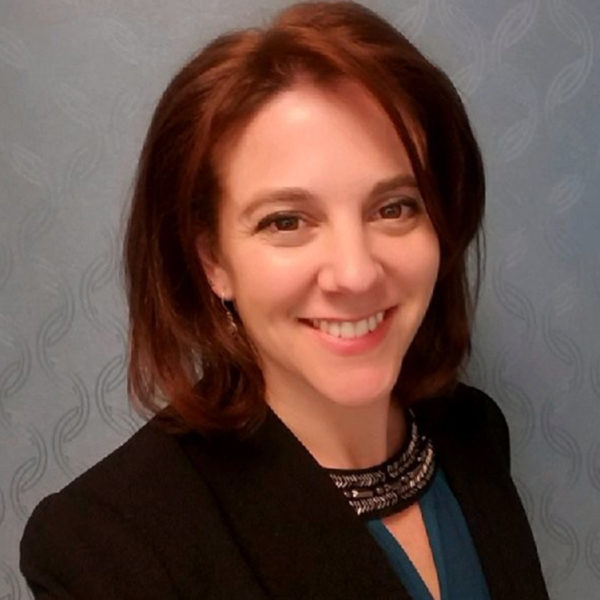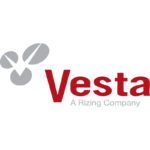
Matt Flood
VP of IT, Prestige Brands
Leveraging SAP Integrated Business Planning for Record-Breaking Growth at Prestige Brands
Prestige Brands decided to grow the business from $250 million to $1 billion in revenue.…
Read more >

Barrie Corp
Supply Chain Manager, Gainesville Regional Utilities
Data Management for Operational Success at Gainesville Regional Utilities
On Nov. 7, 2017, Gainesville Regional Utilities (GRU), a municipal-owned utility provider, acquired the biomass…
Read more >

Kumar Prashant
SAP Solution Architect, Belimo Americas
Belimo Americas Leverages Robotics for Fully Automatic Warehouse with Integrated Shipping
Learn how Belimo Americas, a global market leader in the development, production, and marketing of…
Read more >

Tina Jeyasekhar
Senior ERP Business Analyst, Johns Hopkins Health System
Business Procurement so Easy, Who Needs Training!
Experience the journey of Johns Hopkins in implementing an SAP Fiori® one-stop shopping cart application…
Read more >

Ken Harvey
Warehouse Supervisor, Loudoun Water
Loudoun Water Adopts Mobile Warehouse Management to Improve Productivity, Accuracy, and User Experience
The Loudoun Water inventory team conducted an internal review if its inventory management and warehouse…
Read more >

Tim Szendel
Director of Supply Chain Technology, Rockwell Collins
Achieving Supply Chain Operational Excellence
Learn how the integration of DSI’s supply chain apps with SAP ECC and SAP S/4HANA®…
Read more >

Rhonda Dawes
Purchasing Operations Director, Caesars Entertainment
Transaction Optimization: Sourcing Transformation Through Automation with SAP Ariba
Caesars Entertainment sets its sights high in delivering best-in-class sourcing practices and selected SAP® Ariba®…
Read more >

Mark Mullins
Project Manager, Ford Motor Company
Ford Motor Company’s EWM Implementation: Strategy, Challenges, and Lessons Learned
In this session, Ford Motor Company’s business and IT global EWM implementation managers will share…
Read more >

Dave Merko
Procurement Supervisor, Nutrien
Mergers Are Tricky, Nutrien’s Material Master Data Project
Join this session to leverage key lessons learned at Agrium for implementing a material master…
Read more >

Dr. Marc Teerlink
MBA/MBI - Global VP, Intelligent Enterprise Solutions and Artificial Intelligence, SAP
The AI Goldrush: How Do I Make Money off Artificial Intelligence and Machine Learning?
We’re on the verge of the artificial intelligence (AI) gold rush. And just like past…
Read more >

Rudy Rios
SAP Solutions Architect, Monster Beverage Corporation
Monster Energy Transforms Its Product Launch Process
Learn how Monster Energy digitized and streamlined its product launch process with Winshuttle’s New Product…
Read more >

Christina Braud
Maintenance Support Team Lead, Shell
From Miserable BoMs to Visual BoMs at Shell Upstream Deepwater Gulf of Mexico
Shell Upstream Deepwater Gulf of Mexico has consistently received feedback that we need to improve…
Read more >

David Carroll
Associate Partner, Reveal
Strategically Considering SAP S/4HANA? What the Business Community Can Do Now to Prepare for the Impending Technology Change
The current digital wave is an indication of how fast the market can change direction and leave…
Read more >

Patrick Crampton-Thomas
VP Supply Chain, SAP
Enabling the Intelligent Enterprise: SAP Supply Chain and Asset Management Strategy for Digital Transformation
This keynote will highlight key observations from SAP customers, what changes they are having to…
Read more >

Jannell MacAulay, Ph.D.
Retired Lieutenant Colonel and Director Human Performance and Leadership, U.S. Air Force
Healthy Leader, Healthy Team
Focus on your personal human performance to better serve and lead your organization. Leaders set…
Read more >
Know Yourself. Lead Yourself. Lead Others.
Effective leadership is grounded in trust. However, you have to build relationships with those you…
Read more >

Joel Kreider
Global Supply Chain Supervisor, Hess Corporation
Hess Adopts Mobile Warehouse Management to Improve Productivity, Accuracy, and User Experience
Materials management processes at Hess Corporation relied on manual entry of material information, which increased…
Read more >

Justin Burnett
VP of Materials Management and Warehousing, BP America
BP Optimized Capital and Process Efficiencies Through Standardized and Consistent Approach with SAP for Supply Chain
Find out how BP’s Upstream organization extracted value across the global supply chain by using…
Read more >

Baskar Radhakrishnan
Senior Director, SAP Value Engineering, NTT DATA Services
Redefining MRO and Procurement Transformation in the Digital Age with SAP Ariba
Learn how Evergreen Packaging started its digitalization journey with SAP® Ariba® to simplify the indirect…
Read more >

Richard Kirker
Solution Owner, SAP
SAP Extended Warehouse Management: – More Innovations and Deployment Options
This session will cover the latest innovations in SAP EWM as well as new deployment…
Read more >

Paul Kurchina
Global EAM Thought Leader, ASUG
Journey to the Intelligent Enterprise: Customer Stories
Every day, organizations around the world are achieving incredible success with SAP technology in their…
Read more >

Justin Ladenburger
Director of Enterprise Solutions, Vesta Partners
Redefining Asset Management in the Digital World
Join SAP and Vesta Partners in a conversation about the digitalization of asset management and…
Read more >

Dominic Brennan
Director, Vesta Partners
SAP S/4HANA 101—Vesta’s EAM Codex
This session combines the 101 for SAP S/4HANA® 1809 with the accelerators and complementary products contained…
Read more >

Sanjay Srivastava
Director of SAP, GEC Packaging Technologies
Redefining MRO and Procurement Transformation in the Digital Age with SAP Ariba
Learn how Evergreen Packaging started its digitalization journey with SAP® Ariba® to simplify the indirect…
Read more >

Raquel McElyea
Vice President Operational Excellence, Dorman Products
Journey to a Paperless Warehouse in SAP WM
Upon selecting SAP to be our new ERP, we decided after careful review to stay…
Read more >

Tim McLain
Senior Manager of Warehouse and Inventory Management, Incitec Pivot Limited
Master Data Managed
After 25 years on SAP and next to zero effort on master data, Incitec Pivot…
Read more >

Erik Schrampf
Solution Expert, Digital Supply Chain Center of Excellence, SAP America
Redefining Asset Management in the Digital World
Join SAP and Vesta Partners in a conversation about the digitalization of asset management and…
Read more >

Martin Rowan
Senior Partner, Reveal
Are You Mature Enough for S/4? Greenfield or Brownfield: A Business Discussion on How to Make the Right Investment Decision
To be or not to be… Organizations running SAP are thinking about or planning to…
Read more >
Strategically Considering SAP S/4HANA? What the Business Community Can Do Now to Prepare for the Impending Technology Change
The current digital wave is an indication of how fast the market can change direction and leave…
Read more >

Andy Hancock
North America Regional Lead, Innovation and Industry 4.0, Digital Supply Chain, SAP
Journey to the Intelligent Enterprise: Customer Stories
Every day, organizations around the world are achieving incredible success with SAP technology in their…
Read more >
Redefining Asset Management in the Digital World
Join SAP and Vesta Partners in a conversation about the digitalization of asset management and…
Read more >

Murali Karra
Advisor, Puget Sound Energy
Puget Sound Energy Shines a Light on Warehouse Efficiency with SAP EWM
Learn how Puget Sound Energy (PSE) modernized the warehouse operations supporting its gas and electric…
Read more >

Michael Moore
Senior Manager, Application Technical Architect, NASA
NASA’s Journey to SAP Extended Procurement, Public Sector, and Regulated Industries Extension
This session will detail the journey of the NASA procurement community, beginning with the implementation…
Read more >

Bruce Birdsong
Manager, Information Technology, Ford Motor Company
Ford Motor Company’s EWM Implementation: Strategy, Challenges, and Lessons Learned
In this session, Ford Motor Company’s business and IT global EWM implementation managers will share…
Read more >

Martin Stenzig
Chief Technology Officer, Vesta Partners
SAP S/4HANA 101—Vesta’s EAM Codex
This session combines the 101 for SAP S/4HANA® 1809 with the accelerators and complementary products contained…
Read more >

Michelle Bianchi
Director, Strategic Sourcing, Marketing Portfolio, Caesars Entertainment
Transaction Optimization: Sourcing Transformation Through Automation with SAP Ariba
Caesars Entertainment sets its sights high in delivering best-in-class sourcing practices and selected SAP® Ariba®…
Read more >

Greg Courtney
Senior Business Process Analyst, Johns Manville
Enhance ERP and Deliver Business Value by Deploying Modern Applications
Business expectations of IT solutions continue to grow with business stakeholders demanding modern, user-friendly applications,…
Read more >

Bill King
Director, Southern California Edison (SCE) Solution Management, SAP
SAP Transportation Management – Innovations and New Strategies
There have been a lot of recent innovations in the SAP Transportation Management (SAP TM)…
Read more >

Bob Carver
VP, Cloud Inventory Solutions, DSI
Achieving Supply Chain Operational Excellence
Learn how the integration of DSI’s supply chain apps with SAP ECC and SAP S/4HANA®…
Read more >

Lynnanne Catron
Assistant VP of IT, Norfolk Southern Corporation
EAM Journey at Norfolk Southern: Turning Vision into Reality
Norfolk Southern (NS) faces the same key business challenges related to asset management as many…
Read more >

Tom Wery
Maintenance Systems Project Leader, Kohler Corporation
How to Decide Your Future Road Map in SAP S/4HANA for MRO
SAP is undergoing significant change. New SAP S/4HANA® core offerings, changes related to SAP Extended…
Read more >

Randy Bradley
Assistant Professor of Information Systems and Supply Chain Management, University of Tennessee
Digital Innovation: The Kryptonite for Digital Disruption
This session will stretch your thinking about the value and impact of digital supply chains…
Read more >

Phani Wuppalapati
Senior Advisor, Southern California Edison
MRP: Inventory Management and Work Management Integration
Inventory management and material requirements planning (MRP) utilization are truly dependent on each other. Almost…
Read more >

Peter Aynsley-Hartwell
Chief Technology Officer, Utopia Global
Smarter Data Management for Your Enterprise Asset Data
Data is your company’s most valuable asset, but ensuring master data integrity is a key…
Read more >

Mike Jordan
VP, EAM Practice, Utopia Global
Smarter Data Management for Your Enterprise Asset Data
Data is your company’s most valuable asset, but ensuring master data integrity is a key…
Read more >

Denise Powell
Director - Global Business Development, Supply Chain & Procurement, Vesta
How to Decide Your Future Road Map in SAP S/4HANA for MRO
SAP is undergoing significant change. New SAP S/4HANA® core offerings, changes related to SAP Extended…
Read more >

Bob Pennington
Senior Analyst and Non-Hydrocarbon Logistics SAP Systems Team Lead, CITGO Petroleum Corp.
Exploring the Synergies of Maintenance and Procurement Systems
Procurement and maintenance departments alike have pressures and competing priorities that keep planners and buyers…
Read more >

Sean Elliffe
Senior Partner, Reveal
Are You Mature Enough for S/4? Greenfield or Brownfield: A Business Discussion on How to Make the Right Investment Decision
To be or not to be… Organizations running SAP are thinking about or planning to…
Read more >
BP Optimized Capital and Process Efficiencies Through Standardized and Consistent Approach with SAP for Supply Chain
Find out how BP’s Upstream organization extracted value across the global supply chain by using…
Read more >
Strategically Considering SAP S/4HANA? What the Business Community Can Do Now to Prepare for the Impending Technology Change
The current digital wave is an indication of how fast the market can change direction and leave…
Read more >

Cindy Hoffman
Senior Manager, Enterprise Data Governance, Xcel Energy
Creating Enterprise Information Excellence in a Complex Utilities Environment
Every data transformation has its challenges, especially when working with large teams, multiple systems, and…
Read more >

John Olson
Supervisor Central Stores, Puget Sound Energy
Puget Sound Energy Shines a Light on Warehouse Efficiency with SAP EWM
Learn how Puget Sound Energy (PSE) modernized the warehouse operations supporting its gas and electric…
Read more >

Amy Gonzalez
Technical Specialist, Southern California Edison
MRP: Inventory Management and Work Management Integration
Inventory management and material requirements planning (MRP) utilization are truly dependent on each other. Almost…
Read more >

Kieran Dawson
Director of ERP Solutions, Pfizer
Redefining Safety Stock and Strategic Inventory Management at Pfizer
Leveraging the SAP Enterprise Inventory and Service-Level Optimization (EIS) tool, Pfizer can now calculate optimal…
Read more >

Armando De La Ree
Business Process Expert, Raytheon
Holistic Organizational Health Check: A Solution for Your Evolution
We are constantly looking for continuous improvement and ways to transform and enrich our organizations.…
Read more >

Colin Kirkwood
Asset Management, Coal Assets Australia, Glencore Coal Australia
Fit for “Our” Purpose Road Map: Making Simple, Yet Significant Change for Business Benefits
Most SAP journeys start out with a period of significant change as the business learns…
Read more >

Preeti Khurana
Senior Software Engineer, Johns Hopkins Health System
Business Procurement so Easy, Who Needs Training!
Experience the journey of Johns Hopkins in implementing an SAP Fiori® one-stop shopping cart application…
Read more >

Andy Zimmer
Materials and Logistics, Hess Corporation
Hess Adopts Mobile Warehouse Management to Improve Productivity, Accuracy, and User Experience
Materials management processes at Hess Corporation relied on manual entry of material information, which increased…
Read more >

Laura McLennan
Analyst, Master Data, Governance & Systems, Nutrien
Mergers Are Tricky, Nutrien’s Material Master Data Project
Join this session to leverage key lessons learned at Agrium for implementing a material master…
Read more >



